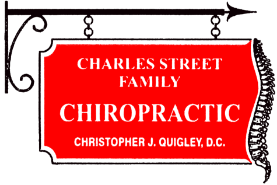Neck pain is one of medicine’s old reliable complaints. Stiffness from bad posture, a sleeping crick, or overdoing a new workout — these are common and usually benign. But what if persistent neck pain is whispering a more ominous story? The 2024 paper “Is Neck Pain A Marker For Something Serious? Like Myelopathy” pushes us to listen more carefully. In our 35th year of being a chiropractor in Boston we agree with that concept.
The authors explore whether neck pain might act as an early signal of degenerative cervical myelopathy (DCM), a progressive spinal cord compression condition that can lead to lasting neurological deficits.
What Is Degenerative Cervical Myelopathy?
DCM occurs when age-related changes, usually mechanical in nature, in the cervical spine — disc degeneration, osteophytes (bone spurs), ligament thickening — narrow the spinal canal and compress the spinal cord. Over time, this triggers a cascade: microvascular injury, ischemia, inflammation, and neuronal damage.
Clinically, DCM can manifest with a constellation of symptoms: tingling or numbness in the hands, weakness, gait disturbances, loss of fine motor control (e.g. problems with buttons or writing), and even bladder or bowel dysfunction in advanced cases.
Because early DCM may not yet cause dramatic symptoms, there’s a real danger of delayed diagnosis — and delayed treatment often means worse outcomes.
What the Paper Says: Neck Pain Does Not Equal Imminent Disaster, but Don’t Ignore It
Sial et al. stress that neck pain is very common in patients who eventually are diagnosed with DCM. But here’s the catch: its predictive value is limited. In other words, just because someone has neck pain doesn’t mean they’re heading toward myelopathy.
Key takeaways from the paper:
- Neck pain is prevalent among DCM patients, but it also occurs in a huge swath of the general population. So, its specificity is poor — many people with neck pain will never develop DCM.
- The authors examine the etiology (causes) of neck pain in DCM: structural degeneration, neural irritation, inflammatory changes, altered biomechanics, and even ischemic stress on neural tissues can contribute.
- Because DCM progression is typically slow and insidious, symptoms evolve gradually — meaning neck pain might precede more alarming neurological deficits by months or years.
- The authors caution against dismissing neck pain too easily — it “should not be discounted” in DCM evaluation, especially when accompanying other red-flag signs.
When Neck Pain Might Be a Harbinger of Something Worse
So, how do we responsibly interpret neck pain? Here are signs that it’s time to be alert (and possibly refer for further workup):
- Neurological symptoms: tingling, numbness, weakness in arms or hands; trouble with fine motor tasks; balance or gait issues.
- Hyperreflexia or abnormal reflexes: exaggerated deep tendon reflexes may indicate upper motor neuron involvement.
- Clonus, Babinski, inverted supinator sign: more specific signs pointing toward spinal cord involvement.
- Progression over time: symptoms worsening gradually, especially over months, or spreading beyond the neck region.
- Imaging findings: MRI showing spinal cord compression, signal changes (like hyperintensity), canal narrowing.
A recent scoping review confirmed that while neck pain is highly sensitive (i.e., many DCM patients have it), its specificity is low — by itself, it’s not a reliable diagnostic marker.
The trick is combining symptoms and signs. For instance, neck pain plus hand coordination issues or altered sensation carries more weight.
What Should You Do If You’re Reading This with a Stiff Neck?
- Don’t panic. Most neck pain isn’t DCM.
- But also, don’t go full “wait and see” if red flags appear.
- Visit a clinician (neurologist, spine specialist) and ask for a complete set of X-rays and a neurological exam.
- If indicated, get imaging like MRI to screen for spinal cord compression.
- Early diagnosis and treatment (surgical decompression when needed) generally lead to better outcomes. Delays cost functional recovery.
Bottom Line: Neck Pain Is Common — But It Can Be a Whisper, not a Shout
Neck pain alone is not a reliable alarm bell for something as serious as myelopathy. But for the attentive clinician (and patient), it can be an early whisper that, combined with other signs, demands a deeper listen.
If you have persistent or escalating neck issues, especially with tingling or coordination changes, don’t shrug it off. Sometimes that achy protest is your nervous system asking for help—before the bigger problems begin.
The bottom line is that if you are over 50 years of age and have neck pain, be sure to go to a doctor who will take X-rays. They are a vital part of the proper evaluation of neck pain that could be something more problematic. Here at Charles Street Family Chiropractic in Boston, we have always used X-rays as an important tool to evaluate our patients. Call us today at 617-720-1992 to see if we can help.
CONTACT US
